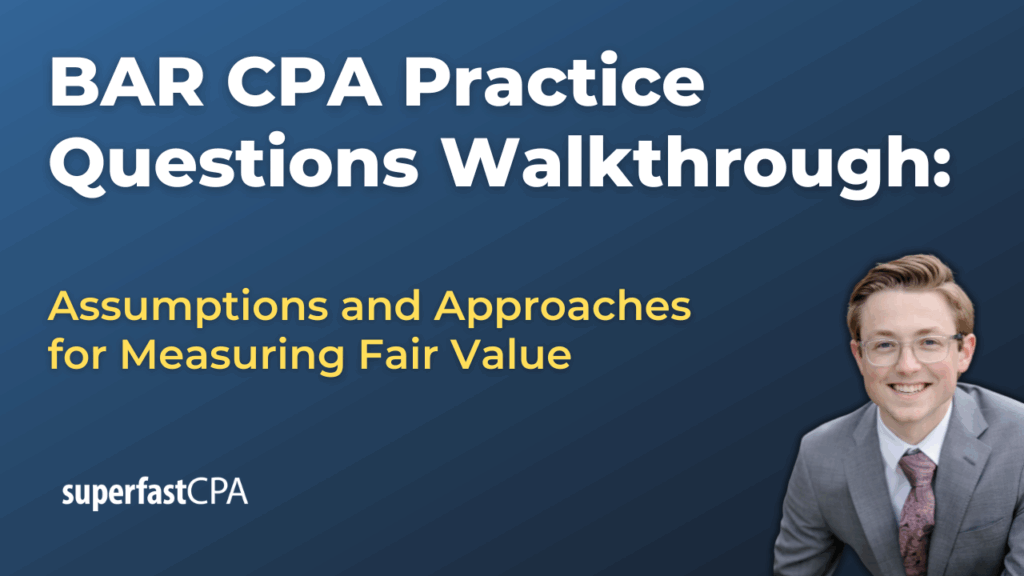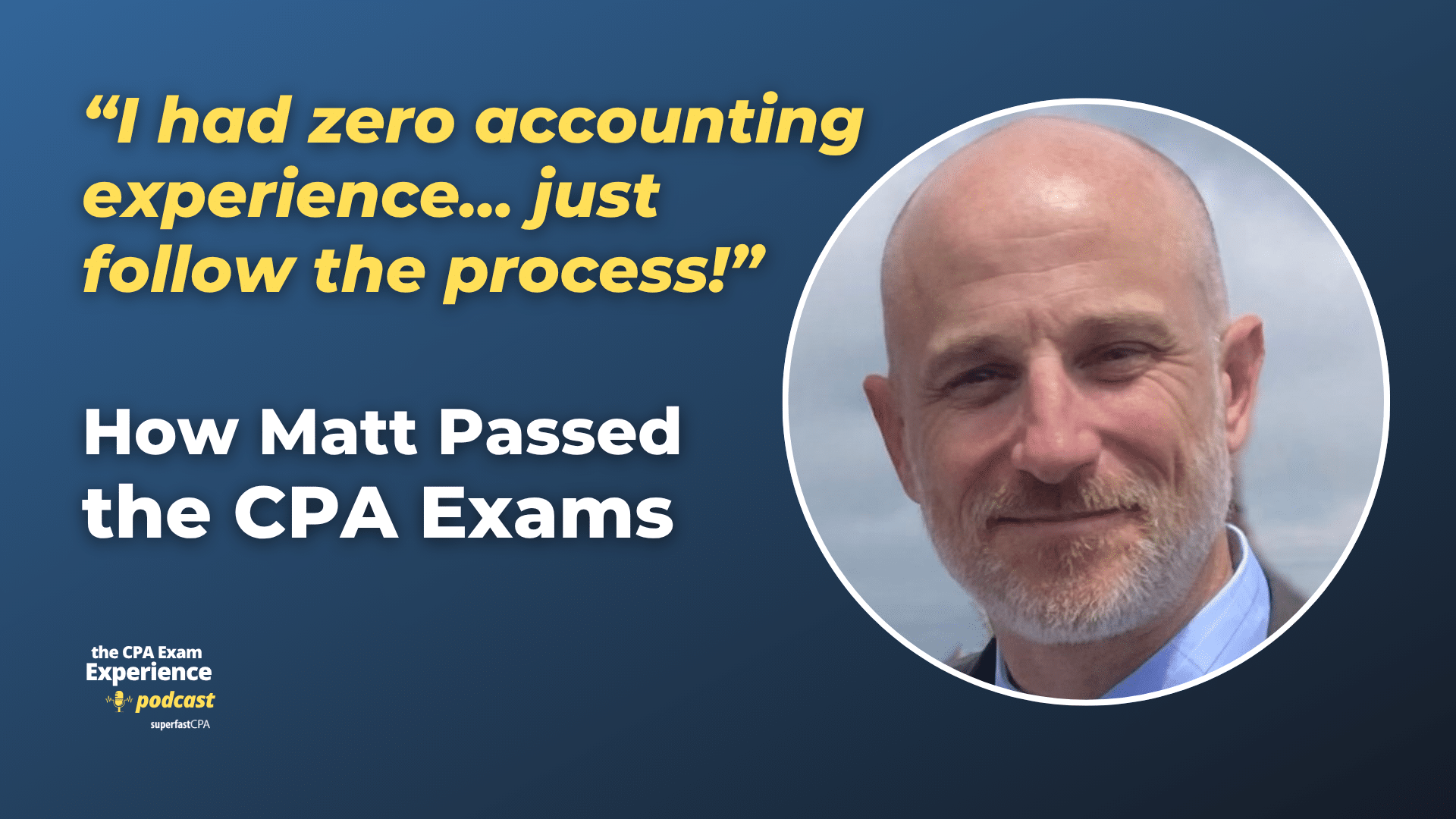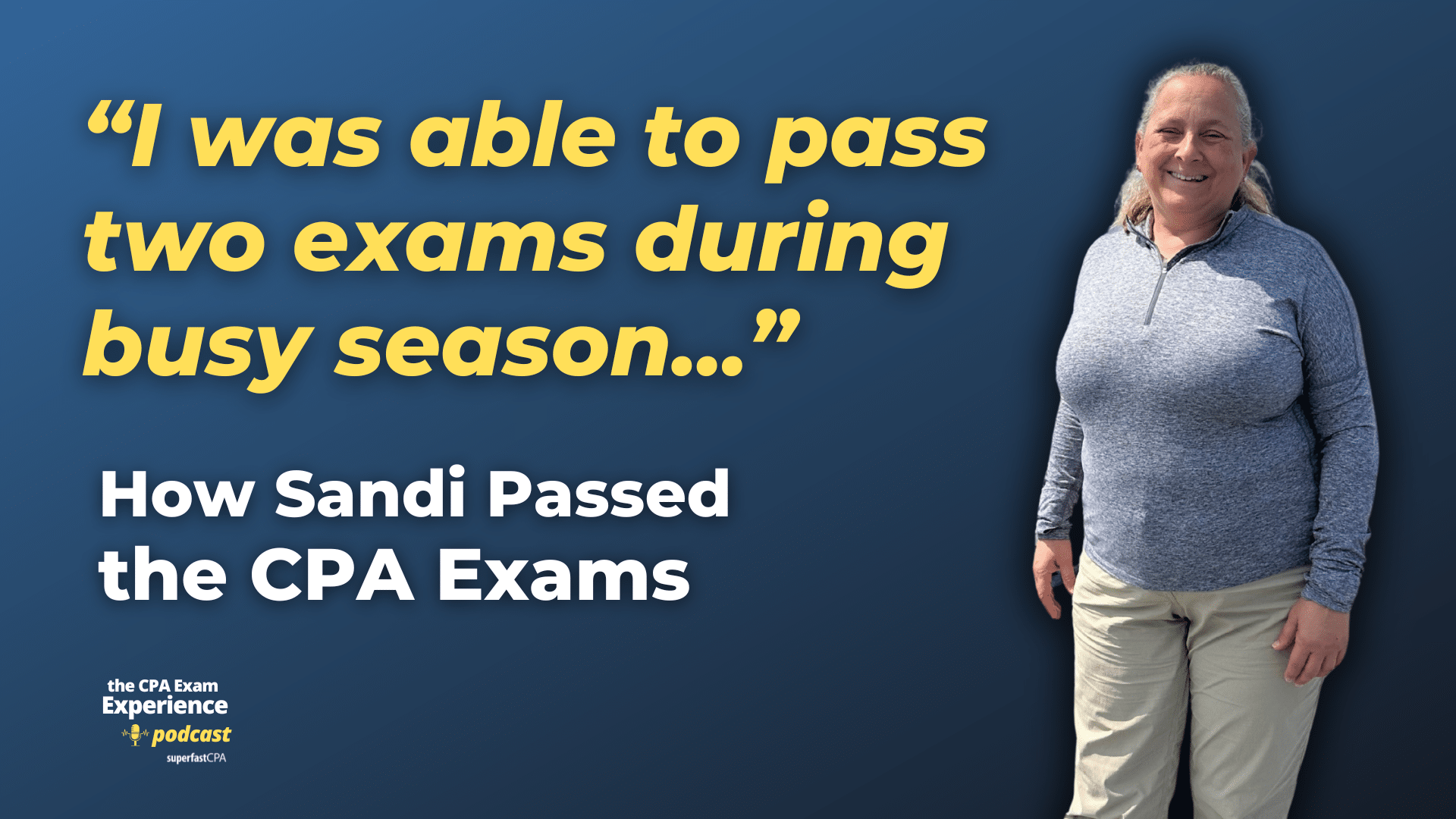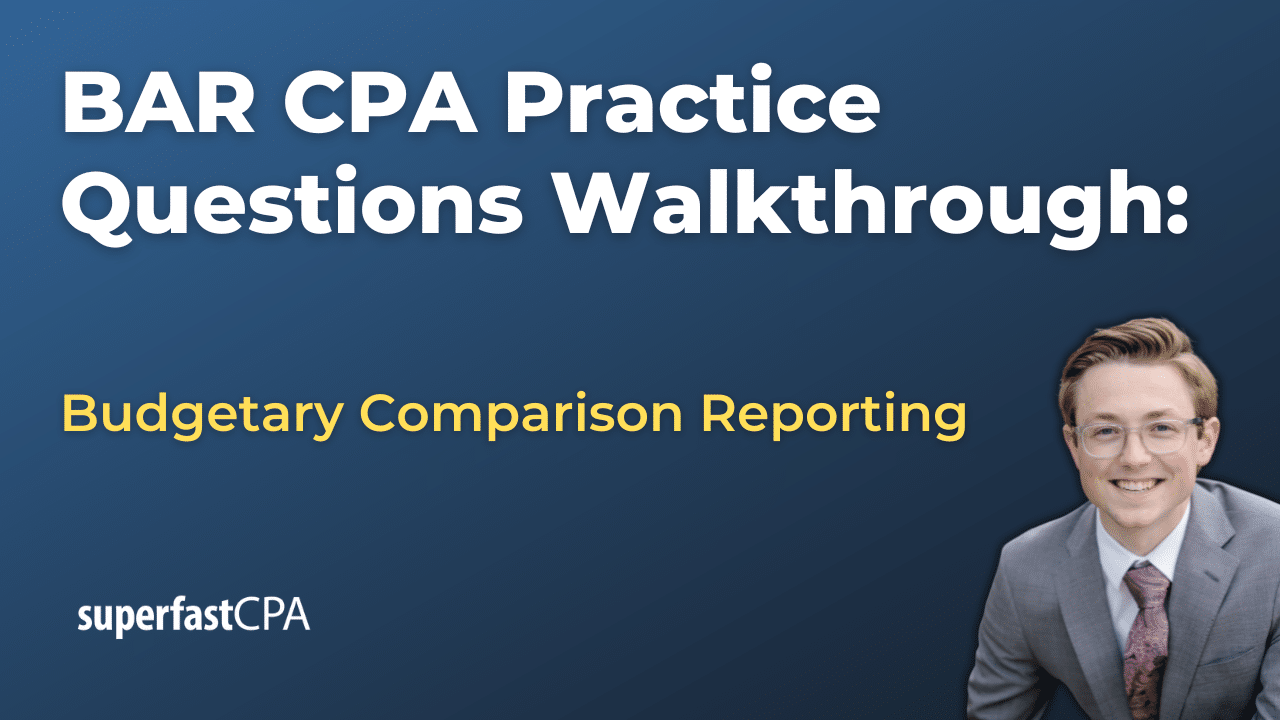In this video, we walk through 7 BAR practice questions teaching about assumptions and approaches for measuring fair value. These questions are from BAR content area 1 on the AICPA CPA exam blueprints: Business Analysis
The best way to use this video is to pause each time we get to a new question in the video, and then make your own attempt at the question before watching us go through it.
Also be sure to watch one of our free webinars on the 6 “key ingredients” to an extremely effective & efficient CPA study process here…
Assumptions and Approaches for Measuring Fair Value
The concept of fair value under generally accepted accounting principles (GAAP), as outlined in ASC 820, requires entities to measure assets and liabilities in a manner that reflects market-based exit prices. This process relies not only on selecting an appropriate valuation technique, but also on applying critical assumptions concerning market participants, usage of the asset, and the scope of the measurement. The following discussion presents the essential components of fair value measurement, supported by illustrative examples to clarify their application in practice.
Market Participant Assumptions
Fair value must be determined based on the assumptions that would be made by market participants—those who are independent, knowledgeable, and willing to transact under conditions that do not involve duress. These assumptions exclude perspectives unique to the reporting entity and instead reflect the views and considerations that would prevail in an orderly market transaction.
Example: Consider an entity, Blackthorn Inc., that owns specialized manufacturing equipment tailored to its proprietary processes. While these custom features may be beneficial to Blackthorn, they are excluded from the fair value measurement unless it can be demonstrated that other market participants would attribute value to them as well.
Highest and Best Use
When measuring the fair value of nonfinancial assets, the valuation must reflect the asset’s highest and best use. This concept refers to the use of the asset that would maximize its value from the perspective of market participants, even if that use differs from the asset’s current application. To qualify as highest and best use, the alternative must be:
- Physically possible,
- Legally permissible, and
- Financially feasible.
Example: Silverline Corp owns a warehouse situated in an area experiencing rapid residential development. Although the building is currently used for industrial storage, if converting the property into residential housing satisfies the three criteria above, then this redevelopment potential constitutes the asset’s highest and best use and must be reflected in its fair value.
Unit of Account
The unit of account defines the specific asset, liability, or group of items to which the fair value measurement applies. It determines the level at which aggregation or disaggregation is appropriate. This determination is not governed by ASC 820 but by the applicable accounting standard relevant to the reporting context.
Example: Haven Corp evaluates a group of assets—namely a building, software, and machinery—that collectively generate cash inflows. If the governing guidance requires that impairment testing be performed at the level of the group, then the unit of account encompasses the entire asset group. Accordingly, the fair value must be assessed in relation to the collective bundle of assets, rather than each component individually.
Market Approach
The market approach estimates fair value by referencing prices and other relevant information generated by market transactions involving identical or comparable assets or liabilities. This approach is most appropriate when observable and reliable market data is available.
Example: Amber Ridge Inc. seeks to measure the fair value of a piece of equipment. Recent market transactions indicate sale prices of $88,000, $90,000, $92,000, and $94,000. Since there is an even number of observations, the median is calculated as the average of the two central values:
($90,000 + $92,000) ÷ 2 = $91,000.
Therefore, $91,000 would be used as the fair value under the market approach.
Cost Approach
The cost approach reflects the amount that would be required currently to replace the service capacity of an asset (replacement cost), adjusted for physical deterioration and functional or economic obsolescence. This methodology is typically employed when there is limited or no observable market data, particularly for specialized assets that do not generate identifiable income streams.
Example: Frostline Corp owns a custom-constructed warehouse located in a remote region. Due to the absence of relevant market transactions and the lack of steady income from the asset, the cost approach is deemed appropriate. The fair value is calculated by determining the cost to reconstruct the warehouse and reducing this amount for depreciation and any obsolescence.
Income Approach
The income approach estimates fair value based on the present value of future economic benefits, such as cash flows or income streams, that the asset is expected to generate. This approach incorporates market-based inputs and expectations regarding risk and return. A widely utilized method within this framework is the constant growth dividend discount model.
Example: Riverbend Inc. holds an equity security expected to pay a $4 dividend in the following year, with dividends anticipated to grow at a constant rate of 3% annually. Given a market-based discount rate of 10%, the fair value is computed as:
$4 ÷ (0.10 − 0.03) = $57.14.
Principal Market and Most Advantageous Market
When measuring fair value, entities are required to use the price in the principal market—defined as the market with the greatest volume and level of activity for the asset or liability. If a principal market does not exist, the most advantageous market must be used. The most advantageous market is identified based on the net amount that would be received after considering transaction costs. However, regardless of the market selection, the fair value is based on the quoted price in that market and not on the net amount.
Example: Clearwell Corp has access to the following two markets:
- Market A: Quoted price = $130; Transaction costs = $10; Net proceeds = $120
- Market B: Quoted price = $125; Transaction costs = $2; Net proceeds = $123
Assuming no principal market exists, Market B is considered the most advantageous due to its higher net proceeds. Nonetheless, the fair value is measured using the quoted price in that market, which is $125. If Market A had been identified as the principal market, then the fair value would have been $130, regardless of the lower net result.
Summary of Key Principles
- Fair value is determined from the perspective of market participants acting in an orderly transaction.
- The highest and best use of nonfinancial assets must be considered, even if it differs from the asset’s current use.
- The unit of account specifies what is being measured and is established by the relevant accounting guidance.
- The market approach uses observable transaction data to determine fair value when active market inputs are available.
- The cost approach is suitable for unique assets with no active market or income generation, and is based on replacement cost adjusted for depreciation.
- The income approach applies when future cash flows can be reasonably estimated and appropriately discounted to present value.
- When a principal market exists, its quoted price must be used. In the absence of one, the most advantageous market is selected, though the quoted price—not the net amount—forms the basis for measurement.
A thorough understanding of these principles is essential for accurate application of fair value measurement in accordance with GAAP and for effectively addressing related scenarios in professional practice or on the CPA exam.









